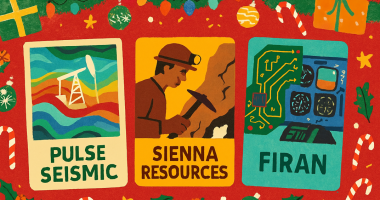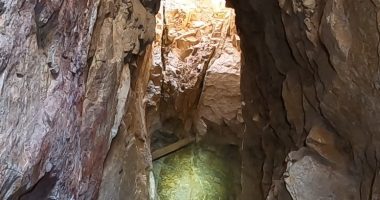Welcome to the Market Herald, I’m Brieanna McCutcheon, and this is the Top Line.
The world of precious metals is always an exciting one. Silver Bullet Mines has been developing gold, silver and copper projects in the Western United States. The company also operates its own mill in Globe, Arizona, as it looks to bring multiple historical mines back into production.
Joining us today to learn a little more about this exciting topic is the VP of Capital Markets, Peter Clausi. Peter, thanks for making time for us today.
TMH: You hit a pair of major achievements late last month, bring us up to date one. You mentioned on one of your social media channels how important it is to have your own mill, and you’ve now started processing some new material.
PC: Sure. We’re in the Buckeye Silver Mine, which last produced in 1873. We’ve cleaned it up, we’ve rehabilitated it, and we’re pulling ore out of the Buckeye Silver mine, we’re then trucking it to the mill that we built in September of 2021 it was an empty field, September of 2022, it is a fully functional ball mill, and those are two major achievements within a year.
TMH: Now let’s talk about the other milestone, you’ve signed an important contract for silver dore.
PC: Yeah, that’s an interesting chapter in our history, we signed a contract to supply 50 kilograms of Silver dore to an unnamed third party and we were working on pouring the dore, but our field team could not get the dore right. As you saw from the press release, the picture came up black and crackled and just awful looking. Well, the field team knew that that’s probably due to the presence of another element that smelts at a higher temperature than gold and silver. So they sent out concentrates representing about 200 tons of ore to a third-party lab to review, and it turns out we have a lot of palladium in our silver, and this is from a new section of the vein that we just opened up. The historical stuff ran fine, suddenly we’re into silver, palladium, $2,000 an ounce, rhodium $14,000 an ounce and osmium $52,000 an ounce. So we’re just going to take a little time to figure out what this means, and how to process it. So you recapture the valuable minerals that are in there and then keep the mine going.
TMH: So you’re just having to switch tactics a little bit.
PC: Yeah, I don’t know yet. I’m just VP of Capital Markets. I do what the geologists and the engineers, the metallurgists tell me to do. Right. So I’m waiting to hear from them. We have a board meeting coming up where all of this will be discussed, and we’ll go through all the different options, but at the same time, we’re starting in Idaho. You recall that in Idaho, we’ve pressed release that we’re going to hire a contract miner, make the historical added safe, go in and pull out between 1500 and 3000 tons of mineralized material, ship it to a local mill, process it and collect a cheque. That’s a process that could take anywhere between 60 and 120 days, but that’s the plan for Idaho at the Washington Mine. So we’ve got a lot of things going on at one time.
TMH: Tell us about the recent “spectacular” silver assay results from your Buckeye Mine in Arizona.
PC: Sure. The results were so good that I had people calling to ask if we had made a typo. You mean grams, right? Not ounces. No, it’s roughly 2300 ounces of silver in the bead, which is about 80,000 grams at a conversion rate of call it thirty-two to one. So the results have been spectacular. The mineralization is great. This recent hiccup on the palladium is a fantastic problem that any mine would love to have. So you used to pull silver? Yeah. Now you’re pulling palladium and rhodium and osmium and gold. Yeah. Okay. That’s a good problem to have. So the scientists will figure that out. We’ll implement the solution, and off we go.
TMH: Speaking of the Buckeye Mine, you recently had some very positive, unexpected news. Tell us about the new discoveries there.
PC: I don’t know yet. We just don’t know. We’ve sent out some more concentrates to be tested, and when we get data back, we’ll communicate that to the market.
TMH: Let’s move a little farther north. We mentioned some of those historical mines off the top. What’s the latest (information) at your Washington Mine in Idaho, in an established silver district.
PC: It is an established silver district. There was a mine here that produced in the 1880s, 1900s and 1930s. The problem was at the Washington Mine, they were chasing a gold vein, and then there was some silver. When silver is 70 cents an ounce, they’re not chasing the silver. So the old-timers chased the gold veins that made meticulous records of where the silver is. At the Washington Mine, that’s what the contract miner is going in to get, that meticulously mapped material that looks like it’s inside the attic and to the right.
TMH: Is there anything we haven’t touched on or mentioned yet that’s important to mention to our viewers and your investors?
PC: There’s so much interesting stuff involved at the mine and the mill and then at the other former producing minds that are also on the property that we plan to bring back. Then there’s the possibility of a copper periphery underlying the entire Black Diamond property. So you and I are going to be seeing a lot of each other.
Thanks again for joining us at The Market Herald today, Peter, we look forward to keeping an eye on things and chatting with you again soon.
We’ve been speaking with Peter Clausi, the VP of Capital Markets for Silver Bullet Mines. The company trades on the TSX Venture Exchange under the ticker symbol SBMI.
For regular updates, visit https://www.silverbulletmines.com/.
Once again, I’d like to thank Mr. Clausi for joining us today to learn more about his company’s latest developments and for sharing his insights with our audience and his investors.
I’m Brieanna McCutcheon for The Market Herald. Thanks for watching Top Line, and we’ll see you next time.
FULL DISCLOSURE: This is a paid article produced by The Market Herald.



